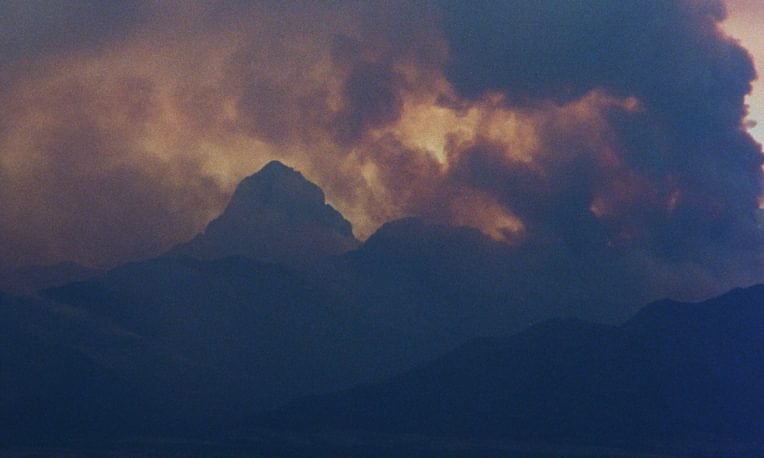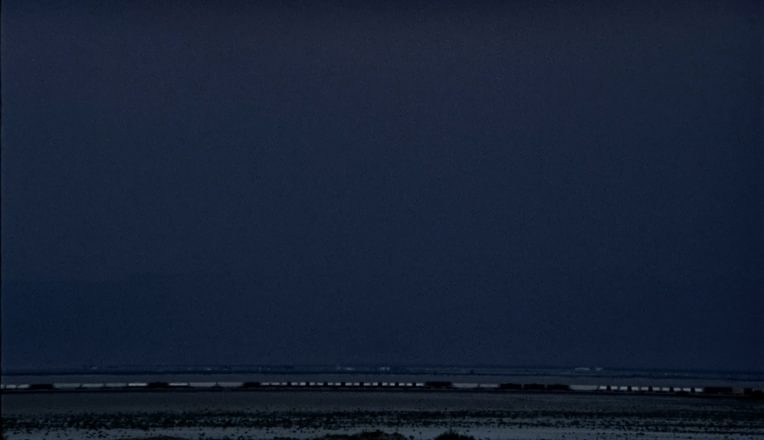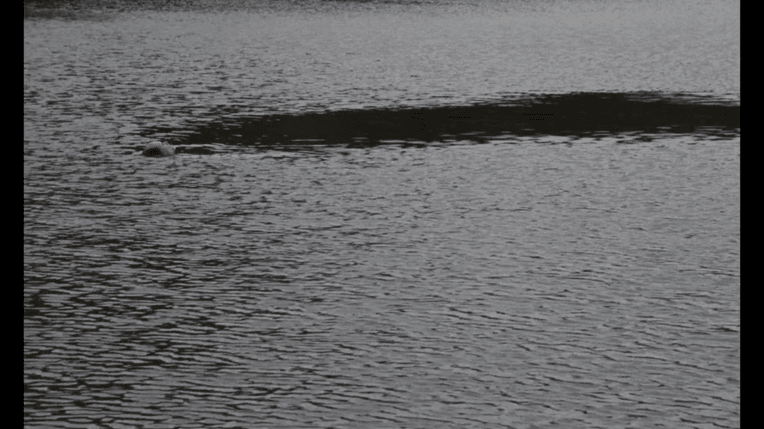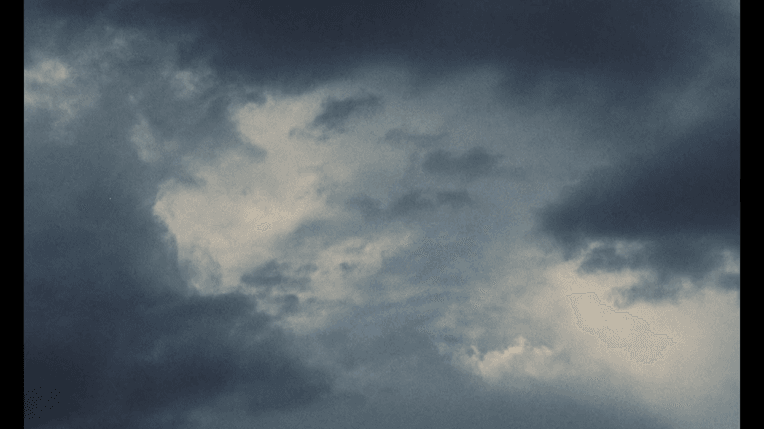
The world appears tranquil at its edges. There, on the radiating borders between this and that, there’s a slight fog, or the thinnest of desert dust: almost formless and beyond comparison, not unlike the amorphousness of longing. Joshua Bonnetta and J. P. Sniadecki’s El Mar La Mar (2017) traces how this longing for a new, more prosperous home chases groups of people across the fierce Sonoran desert between the United States and Mexico, often in silence and near solitude. The film, hued in muted tones and dusky colors, is worn out with longing and desire—neither carnal nor adventurous, but rather born of necessity.
Because of its meticulous framing and reframing of American landscapes, as well as the rigor of its long takes, El Mar La Mar exists in close proximity to the work of experimental filmmakers Sharon Lockhart, James Benning, and Peter Hutton. There is a shared interest in how landscapes unfold over extensive periods of time, allowing for cinematic excess and a myriad of rhythms: botanical, bodily, biological. Yet I would be hesitant to exclusively associate El Mar La Mar with landscape films (or documentary cinema at large), because Bonnetta and Sniadecki’s precise study of desert landscapes also presses close to the essay film, ethnomusicology, and experimental film. The film’s most persistent cinematic technique, the long take, continuously coincides with and transforms itself into snippets of voice recordings, soundscapes, and close-ups of bits and pieces of the human and nonhuman, as well as other more implicit and reticent cinematic gestures.

The voices speaking are the faceless bodies traversing borders. Most forms of contextualization are absent in El Mar La Mar, yet the textures and rhythms of lived experiences are at its heart. From its partly diegetic soundscape to its inclusion of voice recordings, the film’s sound design oscillates between the manifold of human indentations on the American landscape and the expansive calm of sandy deserts. At times, images are altogether absent so as to make room for carefully delineated fragments of interviews, eerie ambient sound, or both at once. More frequently, though, it’s the human voice that is missing, and this lack of speech or language heightens the film’s attention to painterly cloudscapes, lo-fi synth effects, and the clattering wings of free-tail bats at nightfall. Polyphonic at its core, El Mar La Mar continuously transitions between anecdotes, modes of (non)human communication, compositional and sonic strategies, and the filmic rendering of borders that are barely borderlike. In so doing, it works toward a precise and wonderful phenomenology of place, even as it stages the disorientation of its spectator.
Context, El Mar La Mar underlines, is hardly the sine qua non of anthropological films. Instead, one is drawn to the minutest of details and subtleties: lightning bolts, tonal shifts, nondiegetic reverbs, the outline of a train at the edge of the frame. These are, to me, noisy and dusty details: hidden, veiled, and concealed, they point to both losing and finding one’s way in the vastness of the desert. The lost, writes Rebecca Solnit (2006, 10), “are often illiterate in this language that is the language of the earth itself, or don’t stop to read it,” and El Mar La Mar foregrounds the difficulties of becoming literate in the language of deserts (or, the language of the deserted). It is, one interviewee suggests, a matter of disciplining the senses, but even those with skilled vision get lost: “The desert at night is just like the day and your sky is like a roof of light. At night you can see the reflection of the moon and stars on the sand. It’s an illuminated room. You don’t get lost because you can’t see, you get lost because you don’t know where you are.” Neither does the viewer, as this spoken episode is covered in darkness, the only indication of light being the textural imperfections and grainy traces of sixteen-millimeter celluloid film.

Then the voice disappears into nothingness, and all that’s left are watery images and sounds: infrequent raindrops and the shimmering they cause in a gray-green pond, such that the reflection of an unidentified man is obscured. Is he, perhaps, the interviewee, the person whose eyes can see at night? Bonnetta and Sniadecki don’t reveal whether this is the case, but do show him in more detail as though he is floating in a dark abyss that is tearing the pond apart: his face oriented toward the moon and stars of which the unidentified voice spoke a few seconds earlier. His face, to paraphrase Roland Barthes (2002, 778), is soft and tranquil, limp as a sleeping cat, yet what follows is neither a close-up nor a continuation of the voice-over but, rather, a virtually still image of blue-gray cumulus clouds.


This static image is beyond depths: it disrupts the spoken episode, turns night into day, and replaces darkness with the teal-blue shimmering of sunlight. Perhaps it’s a form of montage, through which two divergent images are coalesced by juxtaposition, or at least oriented toward each other. Or perhaps it is more of a rupture than a coalescence, so as to ensure that El Mar La Mar isn’t a film of cathartic moments. Indeed, most things remain unsaid and unfinished, merely gestured toward in the quietest of cinematic ways. Borders, here, are never clearly outlined. Instead of resolutions and analyses, Bonnetta and Sniadecki sketch a nameless range of American terrains, as well as the faceless voices of those who traverse them. But these are terrains of longing, too; harbingers of a mythologized life that lies beyond ashes and sand.
References
Barthes, Roland. 2002. 'En sortant du cinéma', in: Oeuvres complètes, 4: Livres, textes, entretiens, 1972–1976. Paris: Éditions du Seuil. Originally published in 1975.
Solnit, Rebecca. 2006. A Field Guide to Getting Lost. New York: Penguin.